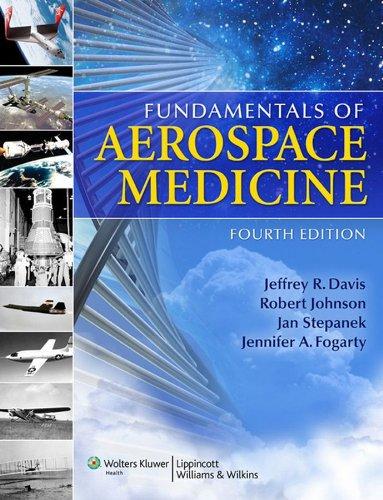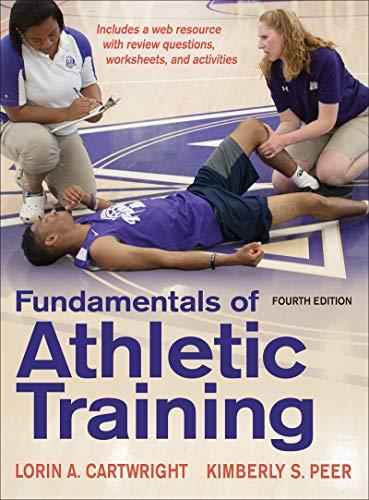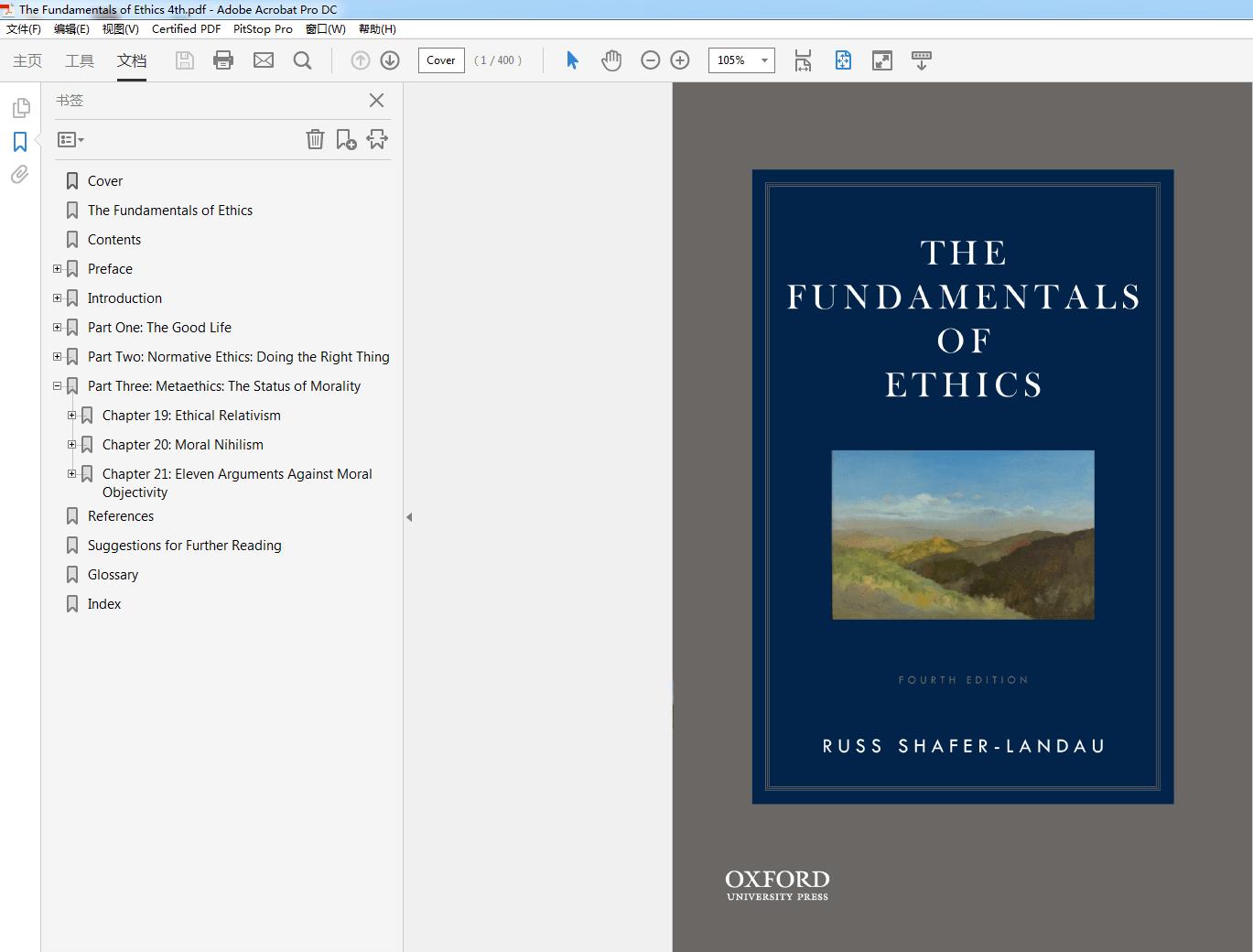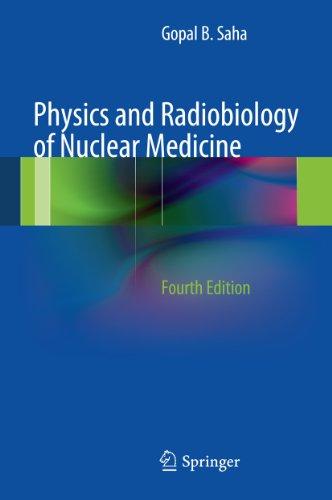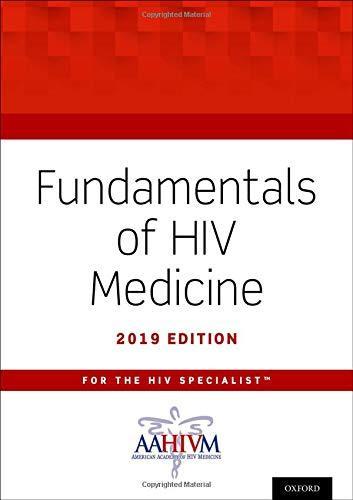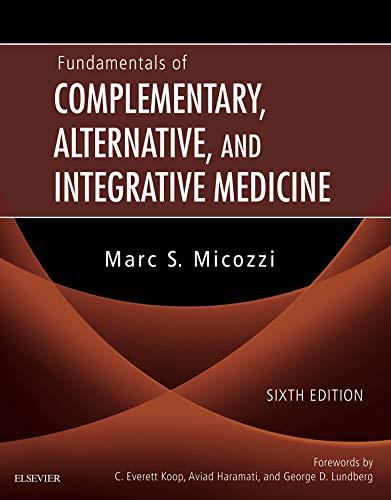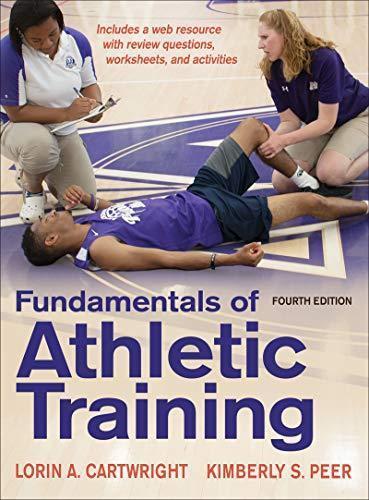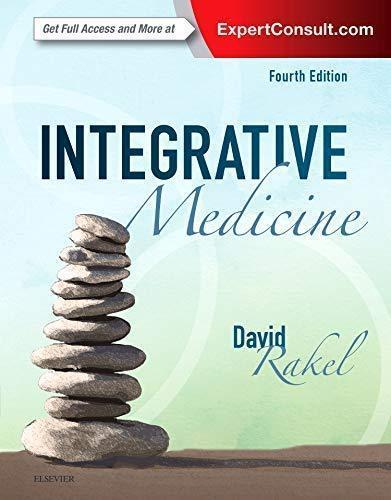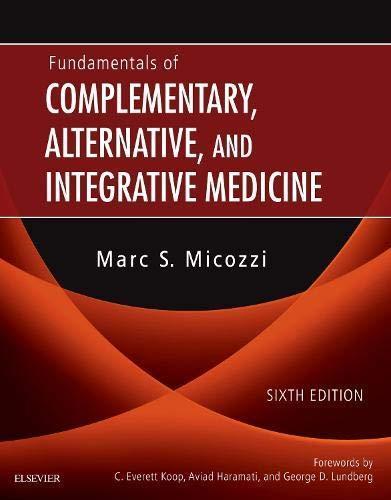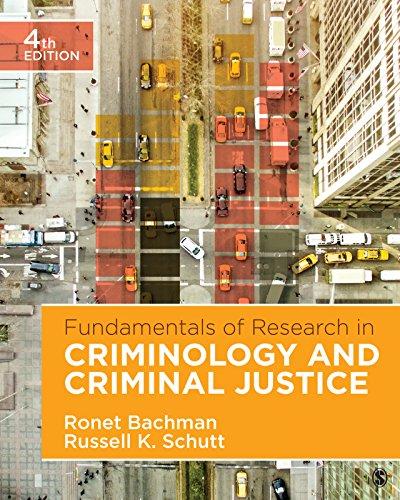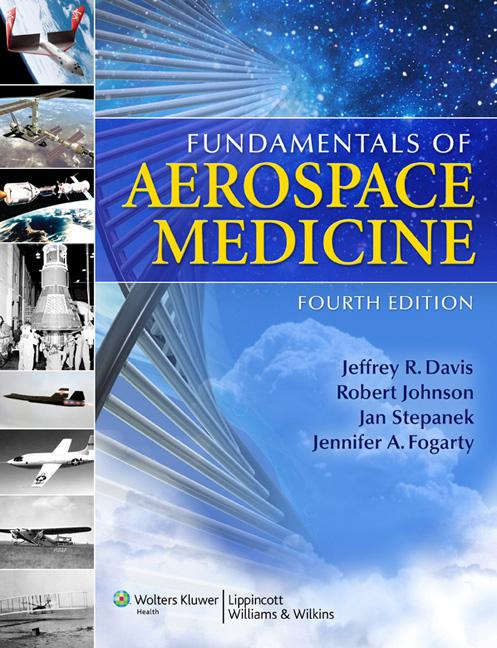Fundamentals of Aerospace Medicine 4th Edition, (Ebook PDF)
Visit to download the full and correct content document: https://ebookmass.com/product/fundamentals-of-aerospace-medicine-4th-edition-ebo ok-pdf/
More products digital (pdf, epub, mobi) instant download maybe you interests ...
Fundamentals of Athletic Training 4th Edition, (Ebook PDF)
https://ebookmass.com/product/fundamentals-of-athletictraining-4th-edition-ebook-pdf/
(Original PDF) The Fundamentals of Ethics 4th
https://ebookmass.com/product/original-pdf-the-fundamentals-ofethics-4th/
Physics and Radiobiology of Nuclear Medicine 4th Edition, (Ebook PDF)
https://ebookmass.com/product/physics-and-radiobiology-ofnuclear-medicine-4th-edition-ebook-pdf/
Fundamentals of HIV Medicine 2019 1st Edition
https://ebookmass.com/product/fundamentals-of-hivmedicine-2019-1st-edition/
Fundamentals of Complementary, Alternative, and Integrative Medicine E Book 6th Edition, (Ebook PDF)
https://ebookmass.com/product/fundamentals-of-complementaryalternative-and-integrative-medicine-e-book-6th-edition-ebookpdf/
Fundamentals of Athletic Training 4th Edition
https://ebookmass.com/product/fundamentals-of-athletictraining-4th-edition/
Integrative Medicine 4th Edition
https://ebookmass.com/product/integrative-medicine-4th-edition/
Fundamentals of Complementary, Alternative, and Integrative Medicine 6th Edition
https://ebookmass.com/product/fundamentals-of-complementaryalternative-and-integrative-medicine-6th-edition/
Fundamentals of Research in Criminology and Criminal Justice 4th Edition,
(Ebook PDF)
https://ebookmass.com/product/fundamentals-of-research-incriminology-and-criminal-justice-4th-edition-ebook-pdf/
Inintroducingthisimpressivevolume,Ibelieveitmost importanttobeginwithadefinitionofthesubject. Aerospace medicineisthatspecialtyareaofmedicineconcernedwith thedeterminationandmaintenanceofthehealth,safety,and performanceofthosewhoflyintheairorinspace.Thisspecialty isnecessarybecausesuchflightsubjectshumans,withtheir earth-boundanatomy,physiologyandpsychology,tothe hostile environmentofairandspace.Humansmustadapt toorbeprotectedfromthechangesintotalenvironment pressure,reducedpartialpressuresofvitalgasses,accelerative forcesofflight,andchangesingravitationalforces,toname justafewofthehazardsencounteredinflight.
Historically,theearlyballoonflightsinthelate1700’s producedreportsofphysicaleffectsonthehumansengaged insuchascents,buttheyweretreatedasinteresting physiologicalobservations.Theadventofpoweredflight 92yearslaterbytheWrightbrothersonDecember17, 1903andthenhumanspaceflightbyGagarinonApril12, 1961revealedadditionaleffectsandpotentialobstaclesto humanperformanceinthisnewenvironment.However, theseobstacleswereviewedaschallengestobesolvedbythose individualssupportingtheexplorersoftheseenvironments. Theylearnedthattheenvironmentsofairandspacewerea continuumandthatbasicphysiologicfundamentalsapplied throughoutthiscontinuum.Itistheseenvironmentaland vehicularstressesuponthosewhoflythatareofultimate concerntotheaerospacemedicinespecialist.
Thespecialtyareaofaerospacemedicineisyoung comparedtosomeothermedicalspecialties.Eventhough physicianshadsupportedthosewhoflewfromthebeginning, thespecialtywasnotrecognizeduntil1953.Thoughrelatively young,aerospacemedicalresearchandextensiveoperational experiencehasbeenaccumulatedandwelldocumented. Thesedatesareinnumerousscientificjournals,reports,and books.
Specializedknowledgeinmanymedicalaswellasnonmedicalareasisrequiredofthepractitionerofaerospace medicine.Themedicalspecialtiesofotolaryngology,ophthalmology,cardiology,neurology,psychiatry/psychology, andpathologyareofparticularimportance.Thehuman cannotbeseparatedfromthevehicle,thereforecertainengineeringprinciplesarealsoimportant.Thetotalsupport ofthosewhoflybecomesateameffort.Theaerospace medicinespecialistmustbeabletocommunicatewithother specialists.Heorshemustbeabletogatherallofthis informationandevaluateitsimpactonthehealthstatus
ofthepilot,relatethistotheflyingenvironment,and renderadecisionregardingfitnessforflying.Therefore, the FundamentalsofAerospaceMedicine mustcoveralarge amountofinformation.Aerospacemedicineisofnecessity verydynamic.Itmustkeeppacewiththeever-increasing technologyofbothmedicineandaviation.Increasesin fighteraircraftcapabilities haveforcedare-evaluationof aphysiologicproblemoncethoughttobesolved.Current socialassaultsonthenecessityofphysicalstandardsfor thosewhoflyhaveevenforcedare-evaluationofmedicalstandards.Aircraftaregettinglarger,andfaster,and moreandmorepeopleareflying.Suchdynamicchanges indicatedthenecessityforacurrent,comprehensivetext. Dr.DeHartbuiltupontheeffortsofhispredecessors, suchasGeneralHarryArmstrong,ingatheringmaterial forthefirsteditionof FundamentalsofAerospaceMedicine. Inthesecondedition,hehasassembledtheaidofrespectedauthoritiesintheirindividualareastoaddnew chapter,updateotherswithrecentdataandcompletely rewriteothers.
Wemustunderstandourpastifwearenottorepeat theerrorsofthepast.Thesection‘‘AerospaceMedicine inPerspective’’coverssomeofthisimportanthistoryvery well.Thesections‘‘PhysiologyoftheFlightEnvironment,’’ ‘‘ClinicalPracticeofAerospace Medicine’’and‘‘Operational AerospaceMedicine,’’havechaptersprovidingfundamentals withbasicreferences.Thesection‘‘ImpactoftheAerospace IndustryonCommunityHealth’’includesachapterconcerningtransmissionofdiseasebyaircraftwithcurrentconcerns aboutanoldandnearlyforgottennemesis,tuberculosis. Fundamentalsrevisitedagain.Newchaptershaveappropriatelybeenadded:‘‘ThermalStress,’’‘‘InternationalAviation Medicine’’and‘‘ManagementofHumanResourcesinAir TransportOperations.’’
Itistherareindividualtodaywhodoesnothavesome contactwiththeaviationenvironmentinsomemanner.All physiciansshouldhavesomebasicknowledgeofaerospace medicalproblemstheyortheirpatientsmightexperience, aswellasunderstandthebreadthofknowledgepossessed bythespecialistinaerospacemedicine.Thistextcanserve asthebasisofthisknowledgeforthegeneralphysician,the aerospacemedicinespecialist,thestudent,oranyonedealing withthemedicalsupportofmilitary,general,orairline aviation,spaceflight,ortheaerospaceindustry.
Ithasbeenmyprivilegein45yearsofpracticein AerospaceMedicinetoparticipateintheAirForce,NASA,
andcivilianareas.IcongratulateDr.DeHartandhisauthors fortheirexcellentcoverageofalltheseareas.Ifweadhere tothefundamentalsandprovideproperaerospacemedical support,thehumanwillcontinuetobeabletoadaptto zerogravityandre-adapttoearth’sgravitywitheverlonger sojournsinspace.Ibelievewewillseemanyofearth’s inhabitantsexperiencingspaceflightandevenonedayliving infarflungspacestationsandcolonies.Thefundamentals willbethebasicknowledgeandthesteppingstonesmaking suchprogresspossible.Thisknowledgemustbeused bytheplanners,designers,operators,andparticipantsin
achievingsafeflight.Thisvolumemakesthatknowledge available.
CharlesA.Berry,MD,MPH
President,Preventive&AerospaceMedicineConsultants,P.A PastPresident,AerospaceMedicalAssociation
PastPresident,InternationalAcademyofAviationandSpace Medicine
PastPresident,UniversityofTexasHealthScienceCenterin Houston,Texas
FormerDirectorofLifeSciences—NASA
Thistextbookreflectsthedynamicandprogressivenature ofthespecialtyofaerospacemedicine.Theaviationindustry hasbeenexplosiveindevelopmentsincetheearly1900s,and therapidadvancesinpoweredflightinmilitaryandcivilian aviationhavedemandedthedevelopmentofparallelmedical systemstoservethosewhofly.Thetechnologicadvances thathaveoccurredandcontinuetooccurmakeitpossible tomovecrews,passengers,troops,patients,andcargofar beyondallearlierexpectationsoftime,size,weight,and distance.Althoughaviationhasproventobeanimportant andincreasinglyrapidmodeoftransportation,italsohas providednewmethodsofwarfareandmannedexploration beyondourplanet.
Overtheyears,astheaviationindustrygrew,the stressesassociatedwithflight,suchasacceleration,speed, andaltitude,becameincreasinglyapparent.Historicevents resultingfromtheprogressiveexpansionoftheflight environmentweresteadilybeingcatalogued.Thenecessity forresearchtostudyandexplorethephysiologiceffects imposedonmanwererecognizedandvigorouslypursued. Althoughresearchintotheeffectsofunpoweredballoon flightswasimportant,thefrequencyandmagnitudeofthe stressesassociatedwithpoweredflightincreasedtheurgency andsophisticationofresearchefforts.
WorldWarIprovidedtheimpetusforconcerted educationalandinvestigativeeffortsinthefieldofaviation medicine.Earlyinthatwar,humanfactorsproblemswere stronglysuspectedasbeingthecauseofmanyaircraft accidentsanddeaths.Aschooltotrainphysicianstocarefor flyersandamedicalresearchlaboratorytoconsiderurgent problemswereestablishedbytheUnitedStatesAirService atHazelhurstField,Mineola,NewYorkin1917.Initial effortstoreducethenumberofaccidentsandthelossof humanlifecenteredongoodhealthandtheapplicationof morerigidphysicalstandardsforpilotsandotheraircrew members.Thefirstclassof‘‘flightsurgeons’’graduatedin 1918.Aprecipitousdecreaseinaccidentsanddeathswasthe directresultofthesededicatedefforts.Sincethattime,flight surgeonshavebeenintimatelyassociatedwithflyersand theirhealthandsafety.Asthelistofmedicalresponsibilities expanded,theindustrialhygieneaspectsofthedeveloping industryincludedgroundoperationsaswellastheaerial mission.TheschoolandlaboratoryatHazelhurstField
movedanumberoftimesandin1959finallyarrivedat itspresentlocationatBrooksAirForceBase,SanAntonio, Texas.TheinstitutionisnowknownastheUnitedStatesAir ForceSchoolofAerospaceMedicine.
Almostfromthebeginningofaviationmedicineasa careerfield,itbecameapparentthatateameffortwas necessarysothatanorganized,multidisciplinaryapproach couldbebestappliedtotheproblemsassociatedwith flight.Physicians,physiologists,psychologists,veterinarians, nurses,dentists,andotherscientistscoveringmanydiverse skillsandinterestsnowcontributemuchtimeandeffortto themenandwomenassociatedwithflying.
Althoughmuchoftheemphasisinitiallywasofa militarynature,thecivilianaspectsofaviationgrewbyleaps andbounds,andtodaythereisadedicated,cooperative, worldwidemilitary-civiliancareerfield.Additionalschools andlaboratoriesarenowdevotedtothecollectionofscientific dataandthedisseminationofvitalinformation.
Typicalofthoseinvolvedinaviationoraerospace medicinehasbeentheneedandresponsetoshareopenly thewealthofinformationbeinggathered.Thecomplexand diversedatahavebeendiscussedbymedicalscientistsof manynationsatmeetingsandconferences.Periodicalsand textbooksalsohavebeenveryhelpfulindocumentingand disseminatingtheknowledgethathasaccumulated.Thistext isacollectionoftheliterarycontributionsofmorethan 40authorsrepresentingthebroadspectrumofaerospace medicine.Eachcontributorisarecognizedexpertamongthe manywhopracticewithinthespecialty.Thesecontributors arecontinuingatraditionbegunover50yearsagobyDr. LouisH.Bauer,wholaidthefirstfoundationstoneswithhis text AviationMedicine.Dr.Bauer’sworkhasbeenexpanded bythecontributionsofDr.HarryArmstrongand,most recentlybyDr.HughW.Randal.Thus,thistextholdsto thetraditionofenumeratingthebasicprinciplesofthe challengingfieldofaerospacemedicine.Thisbookwillbe bothapracticaltextforthestudentandmostvaluable referencesourceforthepractitionerofaerospacemedicine.
HowardW.Unger,MD MajorGeneral,USAF,MC(retired) PastPresidentoftheAerospaceMedicalAssociation FormerTrusteeoftheAmericanBoardofPreventiveMedicine
PREFACE
Twenty-fiveyearsago,itwasdecidedtorevivethetradition ofDr.Armstrongandeditanewtextbookforthedisciplineof aerospacemedicine.Thisfourtheditionof Fundamentalsof AerospaceMedicine continuesthelegacyofDr.RoyDeHart whohadthevisiontodevelopthistextbookmanyyearsago. Weareindebtedtohismanyyearsofserviceandvolunteer hoursforthefirstthreeeditions,andtohisforesightto recruitaneweditorforthethirdedition.Dr.RoyDeHart trainedanewgenerationofeditors,andthefieldwillalways beindebtedtohimforhisselflessservice.Threenewsection editorswereaddedforthisedition,andtheeffortsofDr. RobertJohnson,Dr.JanStepanek,andDr.JenniferFogarty werecriticaltothescopeandtimelinessofthistext.There aremanyreturningcontributorsfromthethirdedition, aswellasmanynewchaptersandnewcontributors.This fourtheditionreflectsthetremendouspaceofchangeinthat twochaptersaredevotedtothefutureatthedawnofthe commercialspaceflightindustry.
Inthelast25years,manychangeshaveoccurredin spaceflightandthepaceofchangehasaccelerated.The SpaceShuttlefirstflewin1981anditsplannedretirement isonthehorizonfor2010.TheMirSpaceStationwas deorbitedandreplacedbytheInternationalSpaceStation (ISS)withtheactiveparticipationbyfiveinternational partnersincludingtheUS,Russia,Japan,Canada,andthe EuropeanSpaceAgency.Sincethethirdedition,asecond SpaceShuttleaccidentresultedinthelossof Columbia and hercrewofseven;theISSwassustainedusingRussianSoyuz andProgresslaunches;andthefirstteacherinspaceflew completingthejourneyfromthe Challenger accident.Space FlightParticipantspaytovisittheISS,andcommercialspace firmsemergedafterSpaceShipOnewontheAnsariX-Prize. Variousfirmsplanbothsuborbitalandorbitalspaceflights. Aerospacemedicinepractitionersoftomorrowmayconduct medicalexamsformanyinterestedpassengers.
Commercialaviationcontinuestoexpandwiththefirst flightsoflong-range,fuel-efficientaircraftsubstantiallybuilt fromcompositematerials.Largeaircrafthaveflowncapable ofcarrying550+passengers.Bothnewtypesofaircraft mayenterservicein2008.Thesenewaircraft,andthe developmentofaglobaleconomyandtravel,increasethe potentialfortransmittingdiseasequicklyaroundtheEarth. Newchallengestoglobalpublichealtharerecognizedbythe internationalaviationauthoritieswithsustainedplanning
efforts.IntheUS,thesportpilotcertificatemaystimulate thegeneralaviationindustry.
Militaryaviationcontinuestobedrivenbyspeed,agility, andsurvivability.Newaircraftwithvectoredthrustprovide variableaccelerationenvironmentswithnewchallengesto humanperformance.Theneedtoadapttotheeverincreasing stressorsofflighthasforcedscientistsandaviationsystem designerstobeevermoreinnovativeinprotectingthe combatpilot.Chaptersinthiseditionaddressnotonly advancesincrewsystemsprotectionbutissuesofhuman factorsinflightoperationalenvironments.UnmannedAerial Vehiclesarenowcommonplaceandtheuniquechallenges oftheseflightsareaddressedinthechapterofhuman factors.
Thegoalofthecontributorstothiseditionisunchanged fromagenerationagowhenthefirsteditionwasprepared forthosephysiciansprovidingprofessionalcareandadvice togeneralaviationpilots,forthespecialistinaerospace medicinesupportingtheairlineindustry,theDepartment ofDefenseandtheNationalAeronauticsandSpace Administration,andnowtheemergingcommercialspace flightindustry.Thetextisintendedforstudents,residents, andperhapsmanymedicalpractitionersthatmaybecome moreinvolvedwithglobalpublichealthissuesaswellas medicalexamsforcommercialspaceflight.Thetextisnot intendedtobeatreatiseoneverysubjectintroducedbut ratherageneralreviewofthemajortopicsthatcomprise thepracticeofaerospacemedicine.Theinterestedreaderis providedwithsuggestedreadingsandreferencestocontinue learningbeyondthescopeofthistext.
Thereaderwillfindmanynewchaptersinthisedition includingchaptersdevotedtotoxicology,radiation,dental, women’shealth,uniqueaircraft,andcommercialspaceflight. Substantialrewriteshavebeenundertakenofmanyofthe chaptersfromthethirdeditionmakingthisasubstantially differenttextfromthethirdedition.Thepaceofchangeis sogreatthatplanningisalreadyunderwayfortechniquesto makenewinformationavailableassoonaspossibletothe practitioner.
Ashasbeenthecaseinthethreeprecedingeditions, proceedsfromthistextwillbedistributedtoschools andscholarshipprograms,nationallyandinternationally, thateducateandtrainphysiciansinthefieldofaerospace medicine.
ACKNOWLEDGMENTS
AsImentionedinthepreface,thecurrentgenerationof practitionersofaerospacemedicineoweadebtofgratitude toDr.RoyDeHartwhohadthevisionanddeterminationto initiateFundamentalsofAerospaceMedicinesometwentyfiveyearsago.IoweDr.DeHartaheartfeltthank-youfor allowingmetobecomeaneditorofthethirdedition,and tolearnfromhimthecomplexprocessofassemblingatext fromcontenttocontributors.Dr.DeHartnotonlyrevived thistextbookwiththefirstedition,butalsoinsuredits futurebyprovidingforneweditors.Hislegacytothefieldof aerospacemedicinehasmanycomponents,butthistextbook maybethemostsignificantinperpetuatingthefield.ToDr. RoyDeHart,thankyoufromtheentireaerospacemedicine community.
Forthefourthedition,Itoobroughtneweditorstothe textbook.Wedecidedtodividethebookintosectionsof physiology,clinicalaerospacemedicine,andoperations,and Ichoseasectioneditorforeach.Iamindebtedtothehard workandmanyhoursthattheseneweditorscontributed, Dr.JenniferFogarty(physiology),Dr.JanStepanek(clinical aerospacemedicine),andDr.RobertJohnson(operations). Dr.BobJohnsonalsohelpedwiththelogisticsofthetextbook, organizingconferencecallsandnotestoauthors.Ms.Diane EllisonattheUniversityofTexasMedicalBranchalsohelped withmanyofthetextbookconferencecalls,letters,e-mails, andphonecallswhilepreparingthebook.Thistextbookwas trulyateameffort,andtheyallputforthanoutstanding effortandcountlesshoursoftimeineditingandassembling thistext.
Iwanttorecognizethecontributorswhoaretheauthors whowrotethisvolume.Withouttheirtechnicalexpertise, willingnesstovolunteermanyhoursofresearch,writingand revisions,thistextbookwouldnotexist.Asacommunityof aerospacemedicinepractitioners,weoweadebtofgratitude totheseauthorswithoutwhomtheunderlyingresearch, clinicalevaluations,andoperationalexperiencewouldnot existtobeabletosustainthefield.Inallaspectsofpractice,in operations,research,clinicalmedicine,andteaching,there aremanycompetingdemandsfortime,andlessrecognition
ofthevalueofanacademicefforttoone’shomeorganization. Sotothecontributorsandalloftheiroutstandingtechnical contributionsandvolunteerefforts,onelastgratefulthankyou.
Thereisagreatdealofnewmaterialinthistextbook asrapiddevelopmentsarenowoccurringinaerospace. Newopportunitiesareemerginginsuborbitalandorbital commercialspaceflight,andthereareplansforcommercial flightstothemoon.Thesenewdevelopmentsshouldproduce newpracticeopportunitiesfortheaerospacemedicine practitioner,andthefutureisasbrightasperhapsatanytime inthehistoryofthefield.Bythetimeofthefifthedition,I hopewecanlookbackonthesuccessfulflightofhundredsif notthousandsofspaceflightparticipantsonsuborbitaland orbitalflights.
IthasbeenapleasuretoworkwiththeLippincott Williams&Wilkinsstaff,andtheassistanceofMs.Kerry Barrett,SeniorManagingEditor,wasinvaluabletothe successofthisedition.Shewasalwaysavailablefor soundadvice,byemailorphone,andwouldprovide timelyassistancetotheeditorsandcontributors.Shealso sawthevalueofthetimingofthisfourtheditionwith therapidchangesinaerospaceincludinglong-rangeand largecommercialaircraft,globalpublichealthissues,the expansionofgovernmentspaceprogramstoincludespace flightparticipants,theemergenceofanexplorationprogram, andtherapiddevelopmentofthecommercialspaceflight industry.AsDr.DeHartnotedinthethirdedition,Williams andWilkinswasthepublisheroftheoriginalaviation medicinetext,editedbyDr.HarryG.Armstrong,andthe traditionmostdefinitelycontinues.
Toyouthenextgenerationofpractitioners,Ihope thistextgivesyouthefoundationforsuccessinaerospace medicine,andencouragesyoutobecomethenextgeneration ofpractitioners,researchers,andteachersessentialtothe successofthisfield.IhopeyouenjoythefieldasmuchasI have,andfindthetimetopassalongyourexpertisetothe nextgeneration.
JeffreyR.Davis
CONTRIBUTORS
RichardAllnutt,MD,MPH, MS(EE) BiodynamicResearchCorporation SanAntonio,Texas
ArnoldA.Angelici,Jr.,MD,MS OccupationalMedicine FederalAviationAdministration CivilAerospaceMedicalInstitute OklahomaCity,Oklahoma
MelchorJ.Antu ˜ nano,MD,MS ClinicalAssociateProfessor DepartmentofPreventiveMedicineand CommunityHealth UniversityofTexasMedicalBranch Galveston,Texas; Director CivilAerospaceMedicalInstitute FederalAviationAdministration OklahomaCity,Oklahoma
MichaelBagshaw,MB,FFOM, DAvMed ProgramDirectorAviationMedicine SchoolofBiomedical&HealthSciences King’sCollegeLondon Guy’sCampus London,UK
DeniseL.Baisden,MD,MS AssistantRegionalFlightSurgeon SouthwestRegion FederalAviationAdministration OklahomaCity,Oklahoma
RobertD.Banks,BEng,MD PrincipalConsultant BiodynamicResearchCorporation SanAntonio,Texas
MichaelR.Barratt,MD,MS Physician/Astronaut JohnsonSpaceCenter NationalAeronauticsandSpace Administration Houston,Texas
StephenA.Bernstein,MD,MPH, FAAFP,COL,MC,SFS Director,USArmyAeromedicalActivity USArmy Enterprise,Alabama
JamesW.Brinkley,BS FormerDirector HumanEffectivenessDirectorate AirForceResearchLaboratory Wright-PattersonAirForceBase,Ohio
StephenL.Carpenter,MD MedicalOfficer, AerospaceMedicalCertification Division FederalAviationAdministration OklahomaCity,Oklahoma
JohnW.Castellani,MD ResearchPhysiologist ThermalandMountainMedicine USARIEM Natick,Massachusetts
SamuelN.Cheuvront,MD ResearchPhysiologist ThermalandMountainMedicine Division
U.S.ArmyResearchInstituteof EnvironmentalMedicine Natick,Massachusetts
ThomasF.Clarke,MD,MPH DirectorGeneralPreventiveMedicine Residency USAFSchoolofAerospaceMedicine BrooksCityBase,Texas
CurtissB.Cook,MD,FACP LieutenantColonel ProfessorofMedicine,Divisionof Endocrinology MayoClinicCollegeofMedicine Scottsdale,Arizona
PaulaA.Corrigan,MD BranchChief DepartmentofInternalMedicine AeromedicalConsultService USAFSchoolofAerospaceMedicine BrooksCityBase,Texas
FrancisA.Cucinotta,MD ChiefScientist NASASpaceRadiationProgram LyndonB.JohnsonSpaceCenter Houston,Texas
JeffreyR.Davis,MD,MS Professor,PreventiveMedicine andCommunityHealth UniversityofTexasMedicalBranch Galveston,Texas
RoyL.DeHart,MD,MS,MPH ProfessorandDirector VanderbiltCenterforOccupational andEnvironmentalMedicine Nashville,Tennessee
J.RobertDille,MD,MIH ConsultantinAerospaceMedicine Norman,Oklahoma
DavidF.Dinges,PhD ProfessorandChief DivisionofSleepandChronobiology, DepartmentofPsychiatry,andCenter forSleepandRespiratory Neurobiology UniversityofPennsylvaniaSchoolof Medicine Philadelphia,Pennsylvania
R.KeyDismukes,PhD ChiefScientistforAeroSpaceHuman Factors NASAAmesResearchCenter MoffettField,California
W.R.Ercoline,MS,PhD Manager,SanAntonioOperations LifeSciencesGroup WyleLaboratories SanAntonio,Texas
NilsErikson,MD,MPH
Captain,U.S.Navy,MedicalCorps Director,AerospaceMedicineResidency NavalOperationalMedicineInstitute Pensacola,Florida
JenniferA.Fogarty,PhD
AdjunctAssistantProfessor PreventiveMedicineandCommunity Health UniversityofTexasMedicalBranch Galveston,Texas; BiomedicalRiskCoordinator SpaceMedicineDivision JohnsonSpaceCenter NationalAeronauticsandSpace Administration Houston,Texas
NamniGoel,PhD AssistantProfessor DivisionofSleepandChronobiology, DepartmentofPsychiatry,andCenter forSleepandRespiratory Neurobiology UniversityofPennsylvaniaSchoolof Medicine Philadelphia,Pennsylvania
JerryR.Goodman,MS Manager,AcousticsOfficeandLeadISS Acoustics JohnsonSpaceCenter NationalAeronauticsandSpace Administration Houston,Texas
MonicaB.Gorbandt,MD Consultant,U.S.ArmySchoolof AviationMedicine MedicalBoards/AviationMedicine FoxArmyHealthCenter RedstoneArsenal,Alabama
DavidP.Gradwell,PhD,MB,ChB
WhittinghamProfessorofAviation Medicine FacultyofOccupationalMedicine RoyalCollegeofPhysicians St.AndrewsPlace London,UK; ConsultantAdviserinAviation Medicine(RAF) AviationMedicineWing RAFCentreofAviationMedicine Henlow,Bedfordshire,UnitedKingdom
GaryW.Gray,MD,PhD,FRCP(C) ConsultantinMedicine
CanadianForcesEnvironmental MedicalEstablishment DefenceResearchandDevelopment Canada Toronto,Canada
FerdinandW.Grosveld,MS,PhD Consultant Hampton,Virginia
RichardM.Harding,BSc, MBBS,PhD PrincipalConsultant BiodynamicResearchCorporation SanAntonio,Texas
JohnD.Hastings,MD SeniorConsultantinNeurology FederationAviationAdministration Tulsa,Oklahoma
StevenM.Hetrick,MD,MPH Director,OccupationalMedicine Program DepartmentofGraduateEducation USAFSchoolofAerospaceMedicine SanAntonio,Texas
JeffreyHudson,PhD
BiomedicalScientistforGeneral Dynamics Wright-PattersonAirForceBase,Ohio
DouglasJ.Ivan,MD ChiefAerospaceOphthalmology Branch, USAFSchoolofAerospaceMedicine BrooksAirForceBase,Texas
JohnT.James,PhD ChiefToxicologist HabitabilityandEnvironmentalFactors Division
JohnsonSpaceCenter NationalAeronauticsandSpace Administration Houston,Texas
RichardT.Jennings,MD,MS AssociateProfessorandDirector AerospaceMedicineResidency UniversityofTexasMedicalBranch Galveston,Texas
RobertJohnson,MD,MPH,MBA AssociateProfessorofMedicine PreventiveMedicineandCommunity Health; TheUniversityofTexasMedicalBranch StaffPhysician AviationMedicalCenter UniversityofTexasMedicalBranch UniversityHospitals Galveston,Texas
DavidR.Jones,MD,MPH ConsultantinAerospacePsychiatry Montgomery,Alabama
RobertW.Kenefick,MS,PhD, FACSM ResearchPhysiologist ThermalandMountainMedicine Division UnitedStatesArmyResearchInstitute ofEnvironmentalMedicine Natick,Massachusetts
JamesA.King,MD,COL,USAF, MC,FS Chief,EmergencyMedicalDepartment WilfordHallUSAFMedicalCenter SanAntonio,Texas
RichardA.Knittig,MD,MPH AerospaceMedicineConsultant NavalAerospaceMedicalInstitute Pensacola,Florida
WilliamB.Kruyer,MD ChiefCardiologist AeromedicalConsultationService USAFSchoolofAerospaceMedicine BrooksCity-Base,Texas
JamesPerryLocke,MD,MS FlightSurgeon FlightMedicine JohnsonSpaceCenter NationalAeronauticsandSpace Administration Houston,Texas
CherylLowry,MD,MPHLTCOL, USAF,MC,FS MisawaAirForceBase,Japan
GregoryJ.Martin,MD Director,InfectiousDiseasesClinical ResearchProgram
AssociateProfessorofMedicine& PreventiveMedicine UniformedServicesUniversity Bethesda,Maryland
P.VernonMcDonald,PhD Director,CommercialHuman Spaceflight WyleLaboratoriesInc. Houston,Texas KerryMcGuire UniversityofWisconsinDoctoral Student JohnsonSpaceCenter NationalAeronauticsandSpace Administration Houston,Texas
GlennW.Mitchell,MD,MPH Vice-PresidentforClinicalSafety SistersofMercyHealthSystem StLouis,Missouri
StanleyR.Mohler,MD,MA ProfessorEmeritus AerospaceMedicine BoonshoftSchoolofMedicine WrightStateUniversity Dayton,Ohio
WilliamM.Morlang,II,DDS AssociateProfessor DepartmentofOralandMaxillofacial Pathology SchoolofDentalMedicine TuftsUniversity Boston,Massachusetts; ConsultantinForensicDentistry ArmedForcesMedicalExaminer ArmedForcesInsituteofPathology Washington,DC
DavidM.Musson,MD,PhD AssistantProfessor DepartmentofAnesthesiaAcademic Director,CenterforClinicalSimulationMcMaster University Hamilton,Ontario,Canada
CatherineO’Brien,MS ResearchBiologist ThermalandMountainMedicine Division
USArmyResearchInstituteof EnvironmentalMedicine Natick,Massachusetts
RobertR.Orford,MD,CM,MS, MPH AssistantProfessor
DivisionofPreventive,Occupational, andAerospaceMedicine, DepartmentofInternalMedicine MayoClinic Scottsdale,Arizona
A.J.Parmet,MD,MPH,FACPM, FAsMA,AIAASM Instructor
ViterbiSchoolofEngineering/Aviation Safety&Security UniversityofSouthernCalifornia LosAngeles,California; EmployeeHealth DepartmentofInternalMedicine SaintLuke’sHospitalofKansasCity KansasCity,Missouri
JamesR.Phelan,MD AssistantClinicalProfessor PreventiveMedicineandCommunity Health UniversityofTexasMedicalBranch GalvestonTexas
SheanE.Phelps,MD,MPH, FAAFP Chief,InjuryBiomechanicsBranch USArmyAeromedicalResearch Laboratory OrtRucker,Alabama
JebS.Pickard,MD,FCCP StaffPulmonologist AeromedicalConsultationService USAFSchoolofAerospaceMedicine BrooksCity-Base,Texas
DuaneL.Pierson,PhD Microbiologist HabitabilityandEnvironmentalFactors Division JohnsonSpaceCenter NationalAeronauticsandSpace Administration Houston,Texas
ThomasRathjen Chief,HabitabilityandEnvironmental FactorsDivision
JohnsonSpaceCenter NationalAeronauticsandSpace Administration Houston,Texas
EduardM.Ricaurte,MD,MS ResearchPhysician FederalAviationAdministration CivilAerospaceMedicalInstitute OklahomaCity,Oklahoma
ElizabethE.Richard,MBA Strategist WyleLaboratories,Inc. Houston,Texas
CharlesF.Sawin,PhD AssociateDirector,SpaceandLife Sciences JohnsonSpaceCenter NationalAeronauticsandSpace Administration Houston,Texas
WarrenS.Silberman,DO Manager,AeromedicalCertification Division FederalAviationAdministration CivilAeromedicalInstitute
SuzanneD.Smith,PhD SeniorResearchEngineer HumanEffectivenessDirectorate BiosciencesandProtectionDivision UnitedStatesAirForce Wright-PattersonAirForceBase,Ohio
JohnA.SmyrskiIII,MD,MPH, MBA LieutenantColonel MedicalCorps,SeniorFlightSurgeon AerospaceMedicineandFamily Medicine; StaffPhysician DivisionSurgeon USArmy:25thInfantryDivision, SchofieldBarracks,Hawaiiand TriplerArmyMedical Center Honolulu,Hawaii
JanStepanek,MPH,MD AssistantProfessorofMedicine CollegeofMedicine; MedicalDirector,AerospaceMedicine Program
DivisonofPreventive,Occupationaland AerospaceMedicine DepartmentofInternalMedicine MayoClinic Scottsdale,Arizona; AssistantProfessor PreventiveMedicineandCommunity Health TheUniversityofTexasMedicalBranch Galveston,Texas
JamesR.Strader,Jr.,MD StaffCardiologist AeromedicalConsultationService USAFSchoolofAerospaceMedicine BrooksCity-Base,Texas
ClaudeThibeault,MD ClinicalAssociateProfessor DepartmentofPreventiveand CommunityHealth UniversityofTexasMedicalBranch Galveston,Texas
ThomasJ.Tredici,MD SeniorScientist AerospaceOphthalmologyBranch USAFSchoolofAerospaceMedicine BrooksAirForceBase,Texas
AnthonyP.Tvaryanas,Maj, USAF,MC,FS Chief,UASHumanSystems Integration BrooksCity-Base,Texas
JamesM.Vanderploeg,MD, MPH ProgramManager WyleLaboratories Houston,Texas
StephenJ.H.V ´ eronneauMD, MS
ResearchMedicalOfficer AerospaceMedicalResearchDivision FAACivilAerospaceMedicalInstitute OklahomaCity,Oklahoma
DougalB.Watson,MBBS,BSc PrincipalMedicalOfficer CivilAviationAuthority Petone,NewZealand
JamesT.Webb,MS,PhD Consultant AerospacePhysiology USAFSchoolofAerospace Medicine SanAntonio,Texas
MihribanWhitmore,PhD Manager,UsabilityTestingandAnalysis Facility
JohnsonSpaceCenter NationalAeronauticsandSpace Administration Houston,Texas
KennethA.Williams,MD,FACEP Director,UniversityEmergency MedicineFoundation RhodeIslandHospital Providence,RhodeIsland
KevinW.Williams,PhD ResearchPsychologist HumanFactorsLaboratory FAACivilAerospaceMedicalInstitute OklahomaCity,Oklahoma
RichardS.Williams ChiefHealthandMedicalOfficer NASA Washington,DC
GregoryZehner SeniorAnthropologist,AirForce ResearchLaboratory Wright-PattersonAirForceBase, Ohio
CONTENTS
Forewordiii
Forewordto3rd Editionv
Forewordto2nd Editionvii
Forewordto1st Editionix
Prefacexi
Acknowledgmentsxiii
Contributorsxv
Abbreviationsxxiii
HISTORY
CHAPTER 1 TheBeginnings:PastandPresent1
J.ROBERTDILLEANDSTANLEYR.MOHLER
PHYSIOLOGYANDENVIRONMENT
CHAPTER 2 RespiratoryPhysiologyandProtectionAgainstHypoxia20
JEBS.PICKARDANDDAVIDP.GRADWELL
CHAPTER 3 PhysiologyofDecompressiveStress46
JANSTEPANEKANDJAMEST.WEBB
CHAPTER 4 HumanResponsetoAcceleration83
ROBERTD.BANKS,JAMESW.BRINKLEY,RICHARDALLNUTT, ANDRICHARDM.HARDING
CHAPTER 5 VibrationandAcoustics110
SUZANNED.SMITH,JERRYR.GOODMAN,ANDFERDINANDW.GROSVELD
CHAPTER 6 SpatialOrientationinFlight142 A.J.PARMETANDW.R.ERCOLINE
CHAPTER 7 ThermalStress206
ROBERTW.KENEFICK,SAMUELN.CHEUVRONT,JOHNW.CASTELLANI,ANDCATHERINEO’BRIEN
CHAPTER 8 CosmicRadiation221
MICHAELBAGSHAWANDFRANCISA.CUCINOTTA
CHAPTER 9 AerospaceToxicologyandMicrobiology236
JOHNT.JAMES,A.J.PARMET,ANDDUANEL.PIERSON
CHAPTER 10 SpaceEnvironments251 JAMESPERRYLOCKE
CLINICAL
CHAPTER 11 PilotHealthandAeromedicalCertification279
ROBERTR.ORFORDANDWARRENS.SILBERMAN
CHAPTER 12 RespiratoryDiseases:AeromedicalImplications306 JEBS.PICKARDANDGARYW.GRAY
CHAPTER 13 ClinicalAerospaceCardiovascularMedicine318
JAMESR.STRADER,JR.,GARYW.GRAY,ANDWILLIAMB.KRUYER
CHAPTER 14 OphthalmologyinAerospaceMedicine349
THOMASJ.TREDICIANDDOUGLASJ.IVAN
CHAPTER 15 OtolaryngologyinAerospaceMedicine380
JAMESR.PHELAN
CHAPTER 16 AerospaceNeurology392 JOHND.HASTINGS
CHAPTER 17 AerospacePsychiatry406 DAVIDR.JONES
CHAPTER 18 EndocrineSystemandNephrology425 PAULAA.CORRIGANANDCURTISSB.COOK
CHAPTER 19 InfectiousDiseases432 GLENNW.MITCHELLANDGREGORYJ.MARTIN
CHAPTER 20 DentalConsiderationsinAerospaceMedicine447 WILLIAMM.MORLANG,II
OPERATIONS
CHAPTER 21 OccupationalandEnvironmentalMedicalSupporttotheAviationIndustry453 ROYL.DEHARTANDSTEVENM.HETRICK
CHAPTER 22 Women’sHealthIssuesinAerospaceMedicine480 MONICAB.GORBANDTANDRICHARDA.KNITTIG
CHAPTER 23 AnIntroductiontoHumanFactorsinAerospace491 THOMASRATHJEN,MIHRIBANWHITMORE,KERRYMCGUIRE,NAMNIGOEL,DAVIDF.DINGES, ANTHONYP.TVARYANAS,GREGORYZEHNER,JEFFREYHUDSON,R.KEYDISMUKES,AND DAVIDM.MUSSON
CHAPTER 24 SpaceOperations516
RICHARDT.JENNINGS,CHARLESF. SAWIN,ANDMICHAELR.BARRATT
CHAPTER 25 AircraftAccidents:InvestigationandPrevention552
STEPHENJ.H.V ´ ERONNEAUANDEDUARDM.RICAURTE
CHAPTER 26 AviationMedicineinUniqueEnvironments624
THOMASF.CLARKE,ROYL.DEHART,NILSERIKSON,JAMESA.KING,CHERYLLOWRY, KENNETHA.WILLIAMS,ANDROBERTJOHNSON
CHAPTER 27 AerospaceMedicineIssuesinUniqueAircraftTypes653
RICHARDS.WILLIAMS,STEPHENL.CARPENTER,DENISEL.BAISDEN,ARNOLDA.ANGELICI,JR., STEPHENA.BERNSTEIN,JOHNA.SMYRSKIIII,DOUGALB.WATSON,SHEANE.PHELPS, KEVINW.WILLIAMS,ANDMELCHORJ.ANTUNANO
CHAPTER 28 ThePracticeofInternationalAerospaceMedicine683 CLAUDETHIBEAULT
THEFUTURE
CHAPTER 29 Aviation,GovernmentSpace,BiomedicalInnovations,andEducation694 JEFFREYR.DAVIS
CHAPTER 30 CommercialHumanSpaceFlight701 MELCHORJ.ANTUNANO,JAMESM.VANDERPLOEG,RICHARDT.JENNINGS,ELIZABETHE.RICHARD, ANDP.VERNONMCDONALD
Index711
ABBREVIATIONS
17-OHCS 17-hydroxycorticosteroid
a acceleration
A anterior
AA aeronauticaladaptability
AA/NA Alcoholics/NarcoticsAnonymous
AaDO2 alveolar/arterialoxygendifference
AAMA ArmyAeromedicalActivity
AART AircraftAccidentResearchTeam
AC aberrantconduction
ACAP AeromedicalConsultantsAdvisoryPanel
ACC AirCombatCommand(formerlyTAC)
ACES advancedconceptejectionseator advancedcrewescapesuit
ACGIH AmericanConferenceofGovernmental IndustrialHygienists
ACLS advancedcardiaclifesupport
ACM aerialcombatmaneuver
AE aeromedicalevacuation
AFB AirForceBase
AFMIC ArmedForcesMedicalIntelligenceCenter
AFRL AirForceResearchLaboratory
AFSS automatedflightservicestations
AG artificialgravity
AGARD AdvisoryGroupforAerospaceResearch andDevelopment
AGSM anti-gstrainingmaneuver
AHI apnea-hypoxiaindex
AL arbitrarylimit
ALJ AdministrativeLawJudge
A-LOC almostlossofconsciousness
ALPA AirlinePilotsAssociation
AM AerospaceMedicine
AMAK airwaymedicalaccessorykit
AMCD AeromedicalCertificationDivision
AMDA AirlineMedicalDirectorsAssociation
AME aviationmedicalexaminer
AMIP AircraftMishapInvestigationand Prevention
AMP AerospaceMedicalProfessional ANDES AircraftNoiseDesignEffectsStudy
ANPRM advancednoticeofproposedrulemaking
ANR activenoisereduction
ANSI AmericanNationalStandardsInstitute
AOPA AircraftOwner’sandPilot’sAssociation
APA AviationMedicalPhysicianAssistants
API AviationPreflightIndoctrination
APS accidentpreventionspecialist
APU auxiliarypowerunit
AR aorticregurgitation
AR advisoryreport
ARMA AdaptabilityRatingforMilitary Aeronautics
ARTCC AirRouteTrafficControlCenters
AS aorticstenosis
ASHRAE AmericanSocietyofHeating, Refrigerating,andAirConditioning Engineers
ASI ItalianSpaceAgency
ASR automaticspeechrecognition
ATA atmospheresabsolute
ATAGS advancedtechnologyanti-Gsuite
ATCS airtrafficcontrolspecialists
ATCT airtrafficcontroltowers
ATLS advancedtraumalifesupport
ATM airtrafficmanagement
ATP airtransportpilot
AV atrioventricular
BAD bipolaraffectivedisorder
BAV bicuspidaorticvalve
BEI biologicalexposureindices
BNC balancednoisecriteria
bpm beatsperminute
BPT bronchialprovocationtest
BTPS bodytemperature,pressuresaturated
BV bloodvolume
BW bacteriologicalwarfare
C cervicalvertebra
C3 Command,Controland Communications
CABG coronaryarterybypassgraft
CAD coronaryarterydisease
CAF coronaryarteryfluoroscopy
CAMI CivilAeromedicalInstitute
CCAT CriticalCoreAirTransport
CCK contaminantclean-upkit
CERAP combinedenrouteandapproachcenter
CFC chlorofluorocarbons
CFIT controlledflightintoterrain
CG centerofgravity
CHeCS CrewHealthCareSystem
CLL centrallightloss
CMO crewmedicalofficer
CMS countermeasuressystem
CNS centralnervoussystem
CO cardiacoutput
CO carbonmonoxide
CO2 carbondioxide
COPD chronicobstructivepulmonary disease
CPAP continuouspositiveairwaypressure
CPAP continuouspositivepressureassisted breathing
CPK creatinephosphokinase
CRM crewresourcemanagement
CRV crewreturnvehicle
CSA CanadianSpaceAgency
CSD corticalspreadingdepression
CSF cerebralspinalfluid
CT computedtomography
CTT colorthresholdtest
CTV crewtransportvehicle
CVP centralvenouspressure
CW chemicalwarfare
d specificdensityofblood
DAET DepartmentofAviationMedicine EducationandTraining
DAI diffuseaxonalinjury
DARA DeutscheAgenturfur Raumfahrtangelenheiten
dB decibel
DCIEM CanadianDefenseandCivilInstituteof EnvironmentalMedicine
DCS decompressionsickness
DEXA dualenergyx-rayabsorptiometry
DLCO diffusingcapacity,carbonmonoxide
DLW doublylabeledwater
DMORT DisasterMortuaryOperationalResponse Team
DNBI diseaseand/ornon-battleinjury
DO dissolvedoxygen
DoD DepartmentofDefense
DOT DepartmentofTransportation
DRT DiagnosticRhymeTest
DS deadspace,lung
DSMIV DiagnosticandStatisticalManualof MentalDisorder,Fourthedition
DLR Germany’sAerospaceResearchCenter andSpaceAgency
E epinephrine
EBCT electronbeamcomputedtomography
ECG electrocardiogramorgraph
ECLSS environmentalcontrolandlifesupport system
ECT equivalentchilltemperature
EDO extendeddurationorbiter
EEG electroencephalogramorgraph
EFIS electronicflightinformationsystems
EHS environmentalhealthsystem
EMK emergencymedicalkit
EMU extravehicularmaneuveringunitor extravehicularmobilityunit
ENEV(Canada) estimatednoeffectsvalue
EOG electrooculography
EPT effectiveperformancetime
ERV expiratoryreservevolume
ESA EuropeanSpaceAgency
ESP erholungspulssume(sumofheartbeats)
ET effectivetemperature
EVA extravehicularactivity
F force
FAA FederalAviationAdministration
FAR FederalAviationRegulations
FDPB fatigue–decreasedproficiencyboundary
FEF50 forcedexpiratoryflowat50%
FEV1 forcedexpiratoryvolumeat1second
FFS Frank’sflyinganti-Gsuit
FFT fastFouriertransformation
FLIR forwardlookinginfrared
FM frequencymodulation
FoF fearofflying
FRC functionalreservecapacity
FS flightsurgeon(s)
FSDO FlightServiceDistrictOffice
g gravitationalconstantof9.81m/sec2
G acceleration-inducedinertialforce
GCR galacticcosmicradiation
GE gastricemptying
GERD gastroesophagealrefluxdisorder
GHz gigaHertz
G-LOC G-inducedlossofconsciousness
GMO GeneralMedicalOfficer
GOR gradualonsetrate
GPS globalpositioningsystem
GWP globalwarmingpotential
+Gx positivetransverseG(AtoP)
+Gz positiveverticalG
±Gy positive/negativelateral(sidetoside)
Gx negativetransverseG(PtoA)
Gz negativeverticalG
h bloodcolumnheight(mm)
+H hydrogenion
HALO high-altitude,low-opening
HBO hyperbaricmedicine
HCM hypertropiccardiomyopathy
HEEDS helicopteremergencyegressdevice
HEMA hydroxyethylmethacrylate
HEPA High-efficiencyparticulateair
HFACS HumanFactorsAnalysisand ClassificationSystem
HGP hardgaspermeable(lenses)
HIMS HumanInterventionMotivationSurvey
HMD helmetmounteddisplay
HMO healthmaintenanceorganization
HMS healthmaintenancesystem
HR heartrate(beatsperminute)
HSG highsustainedG
HSP healthstabilizationprogram
HTG high-Gtolerancegroup
HUT head-uptilttable
Hz Hertz
I inspired
IAM InstituteofAviationMedicine
IATA InternationalAirTransportAssociation
IC inspiratorycapacity
ICAO InternationalCivilAviationOrganization
IEEE InstituteofElectricalandElectronics Engineers
IGF-I Insulin-likegrowthfactorI
IHR InternationalHealthRegulations
ILD interstitiallungdisease
IMS IntegratedMedicalSystem
INR internationalnormalizedratios
IP InternationalPartners
IRB InstitutionalReviewBoard
ISO InternationalStandardsOrganization
ISS InternationalSpaceStation
IVCD intraventricularconductiondelay
JAA (Europe)JointAviationAuthorities
JSC JohnsonSpaceCenter
K constantof1Gtoleranceincrease
km kilometer
kPa kilopascal
KSC KennedySpaceCenter
KW kilowatt
L-1 typeofAGSM
LAD leftaxisdeviation
LAHB leftanteriorhemiblock
LAMPS lightairbornemultipurposesystem
LASIK laserin-situkeratomileusis
LBBB leftbundlebranchblock
LBNP lowerbodynegativepressure
LCG liquidcoolinggarment
LDH lactatedehydrogenase
LEO lowearthorbit
LEP lasereyeprotection
LEQ equivalentcontinuousnoise
LES launchandentrysuits
LiOH lithiumhydroxide
LOC lossofconsciousness
LOS lineofsight
LSAH LongitudinalStudyofAstronautHealth
LTG low-Gtolerancegroup
LVH leftventricularhypertrophy
m massormeter
m/s velocity:meters/second
m/s2 acceleration:meters/second2
M-1 Maneuvernumber1;atypeofAGSM
MAK medicalaccessorykit
MBK medicationandbandagekit
MCC MissionControlCenter
MCCH MissionControlCenterHouston
MCV meancorpuscularvolume
MEDEVAC aeromedicalevacuation
MEDOP MedicalExtendedDurationOrbiterPack
MEF MarineExpeditionaryForce
MFB MultifunctionalBattalions
mg milligrams
MHz MegaHertz
MI myocardialinfarction
MMFR mid-maximalexpiratoryflowrate
mmHg mmmercury
MMIS MilitaryMan-In-Space
MOOTW militaryoperationsotherthanwar
MPH MasterofPublicHealth
MPSR multipurposesupportroom
MR mitralregurgitation
MRI magneticresonanceimaging
MRT modifiedrhymetest
MS mitralstenosis
MS multiplesclerosis
MSE mentalstatusevaluation
MSLT multiplesleeplatencytesting
MVP mitralvalveprolapse
MW milliwatt
MWT maintenanceofwakefulnesstesting
NAA notaeronauticallyadaptable
NAIMS NationalAirspaceSystemInformation MonitoringSystem
NAMI NavalAerospaceMedicalInstitute
NAMRL NavalAeromedicalResearchLaboratory
NAS NavalAirStation
NAS NationalAirspaceSystem
NASA NationalAeronauticsandSpace Administration
NASDA NationalSpaceDevelopmentAgencyof Japan
NATO NorthAtlanticTreatyOrganization
NAWC NavalAirWarfareCenter
NBC Nuclear,BiologicalandChemical
NC noisecriteria
NCRP NationalCouncilonRadiationProtection
NE norepinephrine
NIR nonionizingradiation
No.14CFR Title14oftheCodeofFederal Regulations
NORAD NorthAmericanAirDefenseCommand
NOx oxidesofnitrogen
NPRM NoticeofProposedRuleMaking
NRR noisereductionrating
NSAID nonsteroidalanti-inflammatorydrug
NTSB NationalTransportationSafetyBoard
NVG nightvisiongoggles
O2 oxygen
OBS operationalbioinstrumentationsystem
OOM on-orbitmaintenancetaskallocation
OSA obstructivesleepapnea
OSAPL overallsoundpressurelevel
OSHA OccupationalSafetyandHealth Administration
OTC over-the-counter
P posteriororpressure
Pa Pascal
Pa arterialbloodpressure(mmHg)
PA pulmonaryalveolarpressure
PAC prematureatrialcontraction
PACO2 arteria0lCO2 partialpressure
PAO2 alveolaroxygentension
PAO2 arterialoxygenpartialpressure
PB phoneticallybalanced
PBG positivepressurebreathingduring Gexposure
PCM primarycaremanager
PDAY pathobiologicaldeterminantsof atherosclerosisofyouth
PEFR peakexpiratoryflowrate
PET positronemissiontomography
PFT pulmonaryfunctiontest
PH hydrostaticpressure(mmHg)
PLL peripherallightloss
PMC privatemedicalconference
PMMA polymethyline-thacrylate
PMR proportionatemortalityratio
PN perceivednoisiness
PO2 oxygenpartialpressure
PP partialpressure
PPB positivepressurebreathing
PPG positivepressure‘‘g’’protection
PRK photorefractivekeratectomy
PSD powerspectraldensity
PSG polysomnography
PSI poundspersquareinch
psi poundsofpressurepersquareinch
psig poundsofpressurepersquareinch-gas
PSP primaryspontaneouspneumothorax
PTA posttraumaticamnesia
PTCA percutaneoustransluminalangioplasty
PTS permanentthresholdshift
PTSD posttraumaticstressdisorder
PVC prematureventricularcontraction
Q bloodperfusionrate
RAD rightaxisdeviation
RAF RoyalAirForce
RAM ResidencyinAerospaceMedicine
RBBB rightbundlebranchblock
RBC redbloodcell
RBCM redbloodcellmass
RCB reducedcomfortboundary
REM rapideyemovement
RF radiofrequency
RFS RegionalFlightSurgeon
RK radialkeratotomy
ROR rapidonsetrate
RQ respiratoryquotient
RSA RussianSpaceAgency
RSC RussianSystemofCountermeasures
RSS recumbentseatingsystem
RTFS returnedtoflyingstatus
RTLS return-to-launchsite
RV residualvolume
SNR signaltonoiseratio
Sa arterialoxygensaturation
SACM simulatedaerialcombatmaneuver
SEE shuttleemergencyeyewashkit
SGOT serumglutamic-oxaloacetic transaminase
SII speechintelligibilityindex
SIL speechinterferencelevels
SLT signallighttest
SMAC spacemaximumallowableconcentration
SMO SeniorMedicalOfficer
SMR standardizedmortalityrate
SMS spacemotionsickness
SODA StatementofDemonstratedAbility
SOMS shuttleorbitermedicalsystems
SOs oxidesofsulfa
SPE(s) solarparticleevents
SR sweatrate
SSRI serotoninspecificuptakeinhibitors
STI speechtransmissionindex
STPD standardtemperature,pressure,dry
STS significantthresholdshiftorSpace TransportationSystem
SVOC semi-volatileorganiccompound(s)
TAC TacticalAirCommand
TAL transoceanicabortlanding
TBI traumaticbraininjury
TCCS tracecontaminantcontrolsystem
TCD transcranialDoppler
TCP tri-cresylphosphate
TEE totalenergyexpenditure
TGA transientglobalamnesia
TLC totallungcapacity
TLV thresholdlimitvalue
TLV totallungvolume
TRACON terminalradarcontrolcenter
TTS temporarythresholdshift
TUC timeofusefulconsciousness
TV tidalvolume
TWA timeweightedaverage
UAV unrestrictedaerialvehicles
UK UnitedKingdom
URLs universalresourcelocators
USAAF UnitedStatesArmyAirForce
USAF UnitedStatesAirForce
USAFSAM UnitedStatesAirForceSchoolof AerospaceMedicine
USASAM UnitedStatesArmySchoolofAviation Medicine
USN UnitedStatesNavy
V pulmonaryventilationrate
V/Q ventilation–perfusionratio
VC vitalcapacity
VHMs voluntaryheadmovements
VOC volatileorganiccompound(s)
VOR vestibulo-ocularreflex
VR venousreturn
VT ventriculartachycardia
VTG volumethoracicgas
VTOL verticaltakeoffandlanding
W watt
w weight
WBGT wetbulbglobetemperature
WCS (shuttle)wastecollectionsystem
WHO WorldHealthOrganization
WPW Wolff-Parkinson-Whitesyndrome
WWII WorldWarII
TheBeginnings:PastandPresent
J.RobertDilleandStanleyR.Mohler
Thusdomenservehistoryandhistorytheages.
Historystartedtoday,notonlyyesterday.
EARLIESTCONCEPTUALIZATIONS
Asprehistoricpeoplemadegruelingtripsacrosstrackless lands,theysurelymusthaveenviedtheswift,graceful,and seeminglyeffortlessflightofbirds.Fantasiesandlegends involvingwingsandflightbygods,angels,rulers,and guardiansoccurinthefolkloreofnearlyeveryculture. Windmills,kites,parachutes,andtherocket(thelatterfrom Chinawheregunpowderwasinventedabout900 AD)were earlyinventionsbearinguponthepursuitofhumanflight.
Thelegendoffatherandson,DaedalusandIcarus, statesthattheymadewingsoffeathersheldtogetherbywax toescapefromKingMinos’Crete.Duringescape,Icarus ignoredDaedalus’admonishments,andflewtoonearthe sun:thewaxmeltedandhefellintothesea.
RogerBacon,a13thcenturyFranciscanmonk,was quotedashearingaboutartificialwingsthatturnedabouta sittingpersonandbeattheair‘‘afterthemannerofaflying bird.’’
LeonardodaVincidesignedaparachutein1500.Healso drewpicturesofhypotheticalhuman-poweredhelicopter andornithopterflyingmachines.Leonardodiedin1519 AD, andhisapproximately500pagesofnotesand1,500sketches wereforgottenformorethan300years.
Ifavailableearlier,thesewritingscouldpossiblyhave acceleratedthecourseofaeronauticaldevelopment.
Manylegends,figures,andfantasiesattesttoourearly predecessors’fascinationwiththepossibilitiesofhuman flight,anachievementthatawaitedthecoalescenceof
intuition,technologicadvances,andgoal-drivenexperimentation.Ofcourse,humantolerancestohigheraltitudesand in-flightaccelerationforcesawaitedactualflightexperiences beforeawarenessoftheseaspectsarose.Inaddition,theneed foroccupantrestraintsystems,crashworthinessprotection, andameanstodealwithin-flightspatialdisorientationunderconditionsoflossofoutsidevisualreference,alsoawaited flightexperience.
Thegeneralsequenceoftopicsinthischapterproceeds fromtheearliestconceptualizationsbycentury,flowing throughthe16thcentury.ThislatterEuropean‘‘AgeofReason’’launchedthe17thcentury‘‘AgeofEnlightenment.’’ Topicstobecoveredincludetheaeromedicalimplicationsof thefirst‘‘mountainsickness’’reportsalongwithearlylaboratorygasstudiesandthehypoxicexperiencesofballoonists. TheDecember17,1903firstflightofaheavier-than-air poweredaircraftpilotedbytheWrightBrotherslaunched thebasisforanexplosivegrowthofaviationandtheneed formedicalsupportofaviators.TheApril12,1961earthorbitingflightofYuriGagarin,oftheUnionofSovietSocialistRepublics(USSR),openedtheeraofhumanspaceflight.
Thechapterconcludescitingthedevelopmentof spacemedicine,bringingustotheJuly20,1969Apollo 11moonlandingbytheNationalAeronauticsandSpace Administration(NASA).The moonlandingwasconducted byNeilArmstrongandEdwinAldrinJr.,thefirsttwo humanstowalkonaheavenlybodyotherthantheearth, whileMichaelCollins,theirorbitingCommandModulePilot circledoverhead.
—EddieRickenbacker
—Anon.
SIXTEENTHCENTURYEXPERIENCES
Discomfortwithmountaintravelwasdocumentedafter theSpanisharmyunderCortezattackedMexicoin1519. Inaddition,theSpanisharmyunderPizarroexperienced mountainsickness25yearslaterwhileconqueringareas subsequentlyknownas Ecuador,Chile,and Peru.
Laterinthecentury,JesuitFatherJosedeAcostablamed theairofloftyplaces.OnfivecrossingsovertheAndes, henotedalossofappetite,thepresenceofnauseaand abdominalpain,inadditiontovomitingoffood,phlegm, bile,andblood.FatherAcostahadprofoundweaknessand hadtobesupportedonhishorse;healsohaddizzinessand waspanting.Uponreturntoloweraltitude,thesymptoms shortlydisappeared.
Acostawrote‘‘Notonlymenfeelthis,animalsdotoo,and sometimesstopsothatnospurcanmakethemadvance.’’ Acostawas‘‘convincedthattheelementoftheairisinthis placesothinandsodelicatethatitisnotproportionedtohumanbreathingwhichrequiresitdenserandmoretemperate.’’
Acosta’saccountwaspublishedinSevillein1590but isbestfoundintheHitchcock(1)translationof Bert’s BarometricPressure.Thebook,originallypublishedinFrench in1878,contains264referencesonmountainsickness. Scientificstudiesontheeffects,prevention,andtreatmentof acuteandchronicmountain(altitude)sickness,pulmonary edema,andcerebraledemahavebeenconductedinthe Andes,onMt.McKinley,andintheHimalayas.Scientists whoconductedthisresearchincludedMcFarland,Hurtado, Hultgren,andKrakauer.
SEVENTEENTHANDEIGHTEENTH CENTURYPROGRESS
EvangelistaTorricelli(1608–1647),anItalianphysicist,inventedthemercurybarometer50yearsafterAcosta’s observations.Hestudiedtheresponseofsmallanimals tovacuum.OttovonGuericke(1602–1686),engineer,of Germany,inventedthepneumaticpumpin1672.Hestudied howcandleflameswereextinguished,animalscouldnot live,andsoundswouldnottravelundervacuum.Healso showedthathorsescouldnotpullaparttwovacuumcontaininghemispheres.RobertBoyle(1627–1691),Irish naturalphilosopher,observedbubblesintheeyeofaviper followingitsdecompressioninavacuumenvironment.He discoveredthatataconstanttemperaturethevolumeofgas variesinverselywithpressure—thefamous‘‘Boyle’sLaw.’’ JosephPriestly(1733–1804),Englishscientist,and AntoineLavoisier(1743–1794),Frenchchemist,areseparatelycreditedwithdiscoveringoxygen.
During1783,brothersJosephandEtienneMontgolfierof Francesuccessfullylaunchedhotairballoons,usingburning dampstraw,wool,andoccasionallyoldshoesandevenold meatinthemix.Arooster,aduck,andasheepwerehefted byhotaironSeptember19ofthatyear.OnOctober15,the brothersliftedPilatredeRozier,anapothecaryofMetz,ina
tetheredhotairballoontoaheightof50ft.OnNovember23, deRozierandFrancoisLaurentMarquisd’Arlandeswerefree floatedacrossParisinahotairballoon.AmericanambassadortoFrance,BenjaminFranklin,observedthatthese developmentsinballooningforetoldapromisingfuture.
ProfessorJacquesAlexandreCesarCharles(1746–1823), alongwithJosephLouisGay-Lussac(1778–1850),articulated whatisnowknownas Charles’ Law thatstates‘‘Ataconstant pressure,agivenamountofgaswillexpanditsvolume indirectproportiontotheabsolutetemperature.’’Charles inventedthehydrogenballoonin1783andmadeaflighton December1withacompanion(theballoon’smaker).After thecompanionlefttheballoonaftera1-hour45-minute flight,thelightenedballoonimmediatelyrosetoanaltitude of3,048m(10,000ft).Charlesreportedrightearand maxillarypainwithincreasingaltitude,andthisreportis usuallyconsideredthefirstcaseofaerotitis.Earlyinthenext century,Gay-Lussacmadeaballoonflight,onSeptember16, 1804,toanaltitudeofover7,016m(23,000ft),arecordthat stoodforapproximatelyahalfcentury.
TrainedinScotlandandloyaltoKingGeorgeIII,Boston physicianJohnJeffriesmovedtoLondonatthebeginning oftheRevolutionaryWar.He,alongwithcrowdsestimated at150,000to250,000,gatheredtoobserveballoonascents byJohnPierreBlanchardandtheItalian,VincentLunardi. JeffriespaidBlanchard100guineastoflyfromLondonto Kentinahydrogenballoon.Ontheflight,Jeffriescarrieda thermometer,barometer,pocketelectrometer,hydrometer, precisiontimepiece,compass,smalltelescope,andseven sealedvialstocollectairsamplesatdifferentaltitudesfor HenryCavendish,thediscovererofhydrogen.Theresults werereportedtotheRoyalSociety.
Blanchardhadannouncedhisintentiontoflyacross theEnglishChannelbeforeagreeingtotakeJeffriesalong. Again,Jeffriesagreedtopaytheexpensesoftheflight,and,if necessarytosaveBlanchard,hewouldjumpintothechannel.
Blanchard,inabitofdeviousness,orderedavestlined withleadtokeeptheballoonfromlifting,forcingJeffries out.ThetailormistakenlysentthevesttoDr.Jeffriesata hotelinDover,andtherusewasuncovered.OnJanuary7, 1785,thetwowerethefirsttocrosstheEnglishChannel, andJeffriesbecamethefirstpayingaerialpassengeronan internationalflight.
Theycarriedthefirstover-watersurvivalgear,corkvests, andequipmentrequiredduringtheover-waterflight.Jeffries reportedvisualillusions:‘‘wewerefixedandobjectsappeared topasstoorfromusorrevolvearoundus.’’Healsoreported that‘‘wewereenvelopedbyacertainstillnessthatcould befelt’’(possiblysensorydeprivation).Atonepointitwas almostnecessaryforJeffriestojumpintothewater.Later, closetoahardlanding,mostoftheirclothing,thecelebration bottleofbrandy,thelifevests,andallequipmentexceptthe barometer,werejettisoned.
TosoftenthelandinginFrance,Jeffriesthoughttoeliminate‘‘fivetosixpoundsofurine.’’AletterfromBenjamin Franklin’ssoninLondon,tohissonwhowaswithhis grandfatherinPariswasdelivered,thefirstairmailedletter.
Jeffries’accountshavebeenreprintedin Aviation,Space,and EnvironmentalMedicine (2,3).
In1789,Dr.JeffriesreturnedtoBostonandpracticed medicineuntilhisdeathin1819.Hewasactiveinteaching, andgavethefirstpubliclectureonanatomy.Hewasa founderoftheBostonMedicalLibrary.
JeffrieshelpedBlanchardtomakethefirsthydrogen balloonfreeflightinAmericaonJanuary9,1793.This eventoccurredinPhiladelphiawiththedeparturefromthe yardoftheWalnutStreetprison.Alargecrowdobserved thedepartingflight,includingPresidentGeorgeWashington andtheFrenchAmbassador.WashingtongaveBlancharda letterofintroduction(Blanchard’sEnglishwasnotverygood, hencetheletterforthosehemaymeetonlanding—some considerthisthefirstU.S.passport).Blanchard’spulserate datacollectedforDr.BenjaminRushwas84beats/minute onthegroundand92at1,772m(5,812ft).Sixairsamples werecollectedforDr.CasperWistar.
TheballoonlandedinGloucesterCounty,NewJersey. BlanchardreturnedtoEuropeandmadeanumberof flightsinvariouscountries.WhileflyingoverTheHague, Netherlands,heisreportedtohavehadanin-flightheart attack,fallingmorethan50ft.HediedonMarch7,1809, thefirstpilotincommandtohaveanin-flightincapacitating cardiacevent.
OnJune15,1785,PilatredeRozier,thefirstpersonlifted bytheMontgolfiers,accompaniedbyacompanion,Pierre Romain,attemptedtocrossthechannelfromFranceto Britaininacombinationhydrogen–hotairballoon.Thehydrogencaughtfirehalfanhouraftertake-offandbothdiedin theaccident,thefirstaeronauticfatalities.DeRozier’sfianc ´ ee, SusanDyer,witnessedtheexplosion,collapsed,anddied.
THENINETEENTHCENTURY
ABelgianphysicist,EtienneRobertson,ascendedtoapproximately7,000m(22,966ft)withamusicteachernamed Lhoest,atHamburg,Germany,onJuly18,1803.Hedescribedahurriedpulse,mentalandphysicalapathy,and anindifferenceinsteadofhisusualgloryandpassionfor discoveries.Hereportedthathislipshadswelledfromblood rushingthereandhishatseemedtoosmall.Hewasableto placehishandinboilingwaterwithoutfeelingpain.Heflew withRussia’sfirstaeronaut,Sacharoff,onJune30,1804.
Robertson’sson,Eugene,ascendedto6,000m(21,000ft) atCastleGarden,NewYork,onOctober16,1826.
Dr.ClaudeBernard(1813–1878)ofFranceisconsidered thefounderofexperimentalmedicine.Hestudiedthe effectsofillness,carbondioxide,cold,andsuperoxygenated aironhypoxiatolerance.Hestudiedcarbonmonoxide combinationwithhemoglobinasacauseofoxygen starvation.Whilestudyingtheliver,hediscoveredthatliver glycogen(hegavethesubstanceitsname)brokedownto glucose,elucidatingtheglucose–glycogenrelationship.
PaulBert(1833–1886),consideredbysometobethe fatherofaviationmedicine,wasborninAuxerre,Yonne,
France.Hewastrainedinengineering,law,physiology, andmedicine.Hesucceededhismentor,ClaudeBernard, tothechairofphysiology,Faculte’desSciences,Paris.He conductedextensiveworkintheearly1870s,thelatter culminatinginhisclassicbook, LaPressionBarom´etrique, RecherchesdePhysiologieExp´erimentale in1878.MaryAlice andFredHitchcocktranslatedthevolumeintoEnglish duringWorldWarII.
Bertundertookstudiestoexplainthesymptomsreported byaeronautsduringtheirballoonascensions.Heconducted 670experimentsinbelljarsandanaltitudechamberofhis construction.Heusedplants,sparrows,rabbits,guineapigs, cats,dogs,andhumans,andreportedthefindingsinhis book.Heestablishedthatdeathoccurredatapartialpressure ofoxygenof35mmHg,irrespectiveofatmosphericpressure. Hefoundthattheintermittentinhalationofairrichinoxygen relievedsymptomsofhypoxia.Healsorecognizedthatexcess carbonicacidinthebloodandtissuescreatedadverseeffects. Thehazardoflossoftoomuchcarbondioxidethrough hyperventilationwasapparentlynotrecognized.Bertdied asResidentGeneral,Tonkinprovince,FrenchIndochina,at age53,onNovember11,1886,duringanattackofdysentery.
JamesGlaisher(1809–1903)andhisballoonengineer, HenryCoxwell(1819–1900),madeseveralascentstohigh altitudesoverEnglandtorelativelyhighaltitudeswithout supplementaloxygen.OnSeptember5,1862,reaching 8,839m(29,000ft),Glaisherwasunconsciousforan estimated7minutes.Itisreportedthatthetwoballoonists experiencedsomeacclimatizationtohighaltitudeswithout turningblueorhavingdifficultybreathing.
HenriSivel,anavalofficer,andJosephCroce-Spinelli, ajournalist,ascendedonMarch22,1874,intheballoon, PolarStar,toaheightof7,300m(23,950ft).Theycarried bagsprovidedbyBertcontaining40%and70%oxygen,the formertobebreathedonreaching3,600m(11,811ft)and thelatteronreaching6,000m(19,685ft).Itwasobserved thattheoxygenimprovedstrength,alertness,memory,visual acuity,andappetite.
OnApril15,1875,they,alongwithathirdaeronaut, GastonTissandier,launchedintheballoon,Zenith,with goldbeater’sbags(madefromthececumofanox)of65% and70%oxygen.Theysoughttoreachanaltitudewellabove 8,000m(26,246ft),exceedingGlaisher’sandCoxwell’s September5,1862record.Bertsentamessagethatthe Frenchballoonistsdidnothavesufficientoxygen,butthey hadliftedoffbeforethearrivalofthemessage.At7,450m (24,442ft)theycutthreebagsofballast,probablyinastate ofhypoxiceuphoria,andclimbedtoanestimated8,600m (28,215ft).AllthreelostconsciousnessandSivelandCroceSpinellidiedin-flight.Tissandierpassedout,comingtosome timelaterastheballoonhadspontaneouslydescendedtoa loweraltitudeandstrucktheground.
Inthethirdeditionofhis PrinciplesandPracticeof AviationMedicine (4),Armstrongwrote,‘‘thefirstuseof airtransportationinsupportofmedicalactivitiesoccurred duringtheSiegeofParisin1870whenatotalof160patients wereremovedfromthecitybymeansofanobservation
balloon.’’Lamhasexaminedtherecordsandfoundthat nopassengerswerepatients(5).Therecordscontainthe namesoftheballoonists,theweightsofthemail,andthe landingsites.TheflightsoccurredbetweenSeptember23, 1870andJanuary21,1871,duringtheParissiegeasthe Franco-Prussianwarcontinued.Tissandierwasoneofthe balloonistsbutmostweresailors.
TWENTIETHCENTURY:EXPONENTIAL GROWTHOFAEROSPACEMEDICINE
Theinventionofthepracticalheavier-than-airpoweredand controlledflightbyWilburandOrvilleWrightofDayton, Ohio,initiallyprovedbythemonDecember17,1903at KittyHawk,NorthCarolina,wasfollowedintheyearsbefore WorldWarIbyflightschoolsandderivativeaircraftin allpartsoftheworld.Largedirigiblesalsoevolved,and theGermanNavalAirshipDivisionconductedairraids overLondon,flyingat5,000to6,000m(16,400–20,000ft) wheneverpossibletoavoidairplaneattacks.Eighthours ofcold,hypoxia,andenginenoisecauseddocumented dizziness,tinnitus,headache,increasedheartandrespiration rates,andfatigue.Thesuppliedcompressedoxygenhadan unpleasantoilytaste.Crewmembersandcommanderswere reluctanttouseoxygen,despitesymptoms,becausetodo sowasconsideredasasignofweakness.Liquidoxygenwas laterusedbecausemorecouldbecarried,weightforweight, thanasagas(4).
OnFebruary7,1912,theU.S.WarDepartmentpublishedinstructionsconcerning thephysicalexaminationfor candidateswithrespecttoaviationduties.Theseinstructions wereprecededbythe1910minimummedicalstandardsfor militarypilotsthatweredevelopedinGermany,thefirst countrytoestablishsuchstandards.Soonafterward,the ItalianAirMedicalServicefollowedsuit.TheFrenchand Britishestablishedmilitarypilotmedicalstandardsin1912. TheU.S.militaryestablisheddetailedphysicalstandardsfor aviatorsundertheguidanceofTheodoreC.Lysterin1916. Thesewerepublishedin1919asthe AirServiceMedical (6).
Withrespecttotheearlystandards,theBritishemphasizedcardiovascularperformanceandhypoxiatolerancewith arebreatherbagthatprogressivelydecreasedtheoxygento simulatethedecreaseinoxygenpressureathigheraltitudes. TheFrenchaddedvestibularfunctionandneurovascular steadinessinthepresenceofanunexpectedgunshot.The Italiansemphasizedreactiontime.WhentheUnitedStates acquireditsfirstairplanein1908,thegeneralarmyduty medicalstandardsapplied.Theseemphasizedthedental characteristics,aholdoverfromtheCivilWarerawhenenlistedmenneededtobeabletopullacorkbytheteethfrom apowderflask.The1912draftaviationmedicalstandards emphasizednormalvision,normalhearingandeardrums, andthevisualabilitytodeterminedistances.Disqualificationincludedcolorblindness,acuteorchronicdiseaseofthe middleorinnerear,orauditorynerve,oranydiseaseofthe respiratory,circulatory,ornervoussystem.Equilibriumwas
testedbystandingwiththeeyesclosed,andthenhopping withtheeyesopenandthenclosed.In1914newarbitrary, morerigorousstandards,wereorderedbytheSurgeonGeneral,butfailureratesweresohighfornewyoungapplicant officersthatthestandardswererelaxed.Onescreeningtest involvedthecandidateholdinganeedlebetweenthethumb andforefinger.Ablankpistolwasfiredbehindthecandidate’s head.Ifthestartlereactionproducedblood,thecandidate wasdisqualified.
DuringthefirstyearofflyinginWorldWarI,when therewaslittlecombat,theEnglishandFrenchfoundthat 2%ofaircraftaccidentswereduetocombat,8%weredueto mechanicalproblems,and90%wereduetohumanfailure; twothirdsofthese90%werereportedtobeduetophysical defects(6).
TheU.S.medicalpersonnelthoughtthataconsiderable proportionofthephysicaldefectsleadingtoaccidents‘‘are theimmediateorlateeffectsofstrainonthecirculation undertheinfluenceoflowoxygentensionintheair’’(6). Somesoldiersdisqualifiedforfurthercombatbecauseof battlefatigue,shellshock,andneurocirculatoryasthenia becamepilots.TheRoyalAirForce(RAF)oftheUnited KingdomstartedaCareofFlyerService.Thisactivity reducedpilotdeficiencyaccidentsover2yearsfrom60% to12%.Improvedphysicalstandards,examinations,flight training,andattentiontophysicalandemotionalproblems undoubtedlycontributedtothisdecline.
Evenso,manyaceshadphysicaldefectsthatwouldbe disqualifyingbycurrentstandards.RoyBrown,whoshot downtopaceBaronManfredvonRichthofen(80victories) in1918,hadchronicstomachdistress,requiringtheregularconsumptionofsoda,milk,andbrandy.Americanpilot ElliottSprings(5victories)consumedmilkofmagnesiaand gin,alternately,torelievechronicstomachsymptoms.‘‘Eddie’’Rickenbacker(26victories)requiredamastoidectomy duringthewar.French‘‘aceofaces,’’GeorgesGuynemer (53victories)disappearedduringaflightthatwaspreceded byemotionalstrainandacrash-inducedconcussionand kneeinjury.
Alittle-knownpilotwiththenameofVeil,whenasked whyhestayedwiththeLafayetteFlyingCorpswhenthe UnitedStatescameintothewar,statedthathewouldnot qualifyintheU.S.airarmbecausehehad‘‘agameleg,astiff neck,aholeinmygroin,andablooddiseaseamongother things.’’
Britain’stopace,34-year-oldMikeMannock(73victories)wasnearlyblindinthelefteyefromacongenital condition.AmericanWilliamThaw(5victories),Lafayette EscadrilleandlaterU.S.103rdAeroSquadron,hadnormal visioninonlyoneeye.Lt.FrankAlberryofAustralialosthis rightlegingroundcombatin1916.Hewasdeterminedto flyashecouldnotbeagroundtroopwithanartificialleg. HesoughtanaudiencewiththeKing,andobtainedaletter ofacceptance.HetookthistotheAirBoard,wentthrough pilottraining,andshotdownsevenenemyaircraft.In1921, theNewAustralianAirForcewouldnotaccepthimforflight service.
GermanaceOswaldBoelcke(40victories),hadsevere asthmaticattacksandGeorgZeumer,skilledpilotand 1915combatinstructorofBaronvonRichthofen,wasa ‘‘lunger’’withadvancedtuberculosis,chroniccoughing,and averyunhealthyappearance.Flyingwasconsideredaseated sedentaryactivity,afactorinthedecisionstoallowcertain soldierstooimpairedtobeinthetrenchestotaketotheair.
TheU.S.Armyhadissuedordersforbiddinghardlandingsandthewearingofspursinthecockpit.InMay1917, theArmyestablishednewmedicalstandardsforflightcrew, includingnormaleyemusclebalance,fusion,intraocular tension,visualfield,near-visionaccommodation,andthe abilitytocleartheearsondescent.Aturningchairtesttook theplaceofthestand,walk,andhoptest.Speciallytrained physiciansat35centersintheUnitedStatesconductedthe examinations.
TheodoreC.Lyster,MD,ChiefSurgeonoftheU.S. ArmyAviationSection,selectedinMay1917IsaacH. Jones,MD,aPhiladelphiaotologist,toopenthefirstof the35medicalexaminationcentersattheUniversityof PennsylvaniaHospital.InDecember,Dr.LysterandDr.Jones spent3monthsinEurope,assessingthemedicalproblems facingaviators.Onreturn,theyestablishedtheAirService MedicalResearchLaboratoryatHazelhurstField,Mineola, LongIsland,NewYork.WilliamH.Wilmer,MDwasputin charge.Thisnewfacilitycontainedalow-pressurechamber, allowingtheprogramtoconductpioneeringstudiesin aviationphysiologyaspectsandaircrewprotectionfrom hypoxia.
Theabove-mentionedprincipalsestablishedamedical researchboardonOctober18,1917toinvestigateconditions thataffecttheefficiencyofpilots,tocarryouttestson pilotabilitiestoflyathighaltitudes,tocarryouttestson suitableequipmenttosupplyoxygentopilots,andtoactas astandingmedicalboardonmattersrelatingtothephysical fitnessofpilots.Examinationproceduresandresearchatthe laboratoryareprovidedin AirServiceMedical (6).
Aprogramatthenewlaboratoryinstitutedselection andtrainingmeasuresfornewaeromedicalexaminers. IsaacJones,MD,andfellowotologist,EugeneR.Lewis, MD,recommendedthattheexaminersflyregularly.Lewis introducedthenewtermforthesephysicians, flightsurgeons. Pilotsandcommandingofficersweretobecounseledwith respecttoanairman’sconditionthatwarrantedtemporary orpermanent‘‘grounding.’’
Thefirstflightsurgeontoreportforactivedutyat aU.S.basewasCapt.RobertJ.Hunter.FromParkField, Tennessee,Dr.HuntersubmittedareportdatedMay13,1918 toDr.Lysterdocumentingearlyeffortstoreduceaccidents. Thereportstatedthat63candidateswereinterviewed,a sickcallwasheldonMay27,arestperiodwasestablished between11:00 AM and3:00 PM,andathleticandrecreation exercisesweretobeheldtwice/week.Sanitarycupsinthefield andshadyareasforcadetswereinstituted.Threenonfatal accidentswereinvestigated,oneduetoinexperience,one possiblyduetohittingtheheadonthecowlduringaloop, andoneduetochasingacrow.Discussionswiththemess
officerwereundertaken.Hunteractedasamemberofa specialboardinseveralcasestoconsiderwhetherfurther instructionofcertaincadetsshouldbecontinued.
Dr.IsaacJonesbelievedthatthedoctorwhofliesbest understandsthepilot.Hetaughtthatkeepingpilotsmentally andphysicallyfittocontinueflyingwasthemainpurposeof flightsurgeons.Hereportedlysaidthatitmighttake100years toconvincepilotsnottofeelthatthemainpurposeofflight surgeonsistofindawaytonotletpilotsfly.JonesandLewis probablycoauthored AirServiceMedical andJonesalsowrote EquilibriumandVertigo,1918.RaymondE.Longacre,MD, a1921graduateofthenewflightsurgeonschool,developed forthefirsttimeasetofpersonalitycriteriaforselecting candidatesforflighttraining.FollowingWorldWarI, HazelhurstFieldwasconvertedtoaprivateairport(Roosevelt Field),andthemedicalresearchfacilitywasmovedin1919 tonearbyMitchelField.In1926thefacilityagainmoved, thistimetoBrooksField,SanAntonio.Lateritmovedto RandolphFieldandsubsequentlybacktoBrooks.
In1924,the NationalGeographicMagazine stated, ‘‘Perhapsthemostheroictestofanaviator’sgritandstamina isanaltitudeclimb’’(7).RudolphW.‘‘Shorty’’Schroederof McCookField,Dayton,Ohio,begantosetaltituderecordsin 1918,reaching10,093m(33,114ft)onFebruary27,1920,his thirdrecord.HeusedaLePereLUSAC-11(LePereU.S.Army Combat)opencockpitAmerican-producedtwo-seatbiplane thatresembledtheBritishBristolfighter.IthadaGEMoss superchargerpoweredbyexhaustgasestoboostairtoits400 hpLibertyengine.Schroeder’soxygengaveoutatthepeak altitudeandhelostconsciousness.Herecoveredat914.4m (3,000ft)afterlosing9,144m(30,000ft)in2minutesand landedattheedgeoftherivernearMcCookField.There wereotherproblems,includingiceintheoxygentubesand carbonmonoxide.Theflightwasamajordemonstrationof capabilitiesanddeficienciesinpursuinghigh-altitudeflights.
JohnA.MacreadyfollowedtheSchroederflightsinthe sameaircraftandreached11,521m(37,800ft)onSeptember 28,1921.Heworesuitsofwoolenunderwear,hisregulation uniform,aknittedwoolgarment,aleathersuitpaddedwith downandfeathers,fur-linedgloves,fleece-linedmoccasins overtheboots,andgogglestreatedwithanantifreezegelatin (Figure1-1).Anoxygentubewasattachedtoapipestem mouthpiece.Amaskprotectedthefacefromfreezingatthe 67◦ Frangeofairtemperature.
MacreadyandOakleyKellymadethefirstnonstop transcontinentalairplaneflightinaFokkerT-2monoplane acrosstheUnitedStates,departingRooseveltField,Long Island,NewYork,at12:36 PM (EST)onMay2,1923, andlandingatRockwellField,SanDiego,California,at 3:26 PM (EST)onMay3,aflightof26hoursand50 minutescovering2,516mi.Thepilotshadmadetwoprior ‘‘endurance’’cross-countryflightsintheFokkertotesttheir physicalcapabilitiesonsuchlongflightsaswellastheaircraft anditsequipment.Thepilotintheopencockpitjustbehind theenginecouldcheckthemaps enroute whiletheother pilotinthefuselagewithsidewindowskeptthewingslevel withasetofcontrols,a‘‘humanautopilot.’’Kellymade
